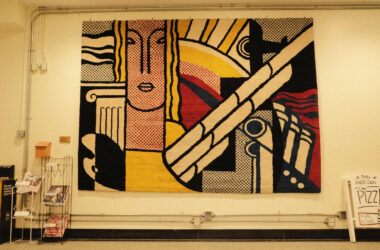In many ways, it feels like we are in an era full of newfound support for sexual assault survivors; public awareness campaigns like #MeToo and op-eds from celebrities such as Uma Thurman have helped facilitate, at least in many liberal cosmopolitan spaces, a more empathetic and trusting climate for outspoken survivors. Awareness and compassion is not solely allotted to celebrities with a platform, however, and recognition of sexual assault as an everyday reality is on the looming cultural horizon. Community acceptance of a survivor’s story, as well as a sensitivity to their triggers, is absolutely crucial for the healing process to begin.
But, for many survivors, there is a disconnect between increased awareness of sexual assault and their own personal healing. Shanly Dixon works at the Atwater Library and Computer Center under a Status of Women Canada funding project to address gender-based sexual violence on Montreal campuses. Dixon teamed up with Alanna Thain, an associate professor of Cultural Studies and World Cinemas in McGill’s Department of English and Director of McGill’s Institute for Gender, Sexuality, and Feminist Studies (IGSF), and McGill students Cassie Jones (U4 Anthropology) and Sofia Misenheimer (MA Communication Studies), to coordinate a day-long event, Growth on the Horizon: A Day of Arts-Based Healing at McGill. Held on March 22 in buildings across the Downtown campus, from library classrooms to publicly-accessible booths in the Arts building foyer, the event was composed of several workshops and themed discussions during which students could be reminded of the pervasiveness of sexual assault and the ways in which survivors can begin to outsource their pain through artistic creation.
“We envisioned healing as a multifaceted experience which can include healing at the personal, interpersonal, community, and institutional levels—healing among students, healing between educational administrations and the students, and the healing of institutional processes and systems,” Jones and Misenheimer wrote in an email to The McGill Tribune.
Workshops ranged from watching a dramatic skit about the university complaint process, to screen printing wearable patches, to adding ribbons to form a cooperatively-woven tapestry. Participating students had a variety of outlets to choose from.
“[At the event] you could look, listen, write, draw, respond, drink healing tea, take a walk in the woods, screenprint a patch with an encouraging message, or walk away with a sticker to remind you that you aren’t alone in this,” Jones and Misenheimer wrote.
The event coordinators created one of the art installations themselves: “Altaring Solitude” is collection of curated objects on a wicker altar covered with dozens of fresh flowers.
“We wanted to represent the anniversary effect,” Jones said, “We have a psychological and embodied memory of trauma that can be re-triggered after an event; sometimes the time of year victims were assaulted, even if it’s years ago, can [make them] re-experience those symptoms in a phantom-like but very real way.”
At the bottom compartment of the altar nestled a mailbox-like basket; individuals could take a piece of loose paper, symbolically ripped from campus-issued agendas and old metro maps (common places where trauma is inflicted), and write their wish of healing as a method of letting go. The final step was to fold and place the paper in the basket.
“If you don’t feel comfortable, you can write about healing and what healing means to you, or a message that you extend to women and men and non-binary folk of a future that you envision,” Jones and Misenheimer wrote. “We have the basket [both] open and closed because we want to hear your voice but we want to be protective of your voice. You can take any flower once you submit your message.”
The mission to inspire and incite healing processes through art doesn’t stop in the McGill Arts lobby, Misenheimer explained as she headed a table promoting a project called “Post-Secrets.”
“What people need [as sexual assault survivors] isn’t the same across institutions,” Misenheimer said. “We support other students taking on the initiative [at CEGEPs], so we have installations that will travel, and each school would build on that [artistic healing].”
Besides the impressive scope of the project, aimed at addressing issues across the province, the project’s accessibility is not hampered by its aspirations: Sexual healing through artistic processes is still an intimate, yet safe, path for a survivor to embark upon.
David Rawalia runs a screenprinting organization called “Machino.” Rawalia’s booth at the event offered students the chance to personally screenprint a feminist message, like “If you want the rose you must respect the thorns,” or “End rape culture: normalize no more.” Rawalia feels encouraged in his work.
“[This] is an occasion to encourage having people have these quotes on their person to express their frustrations or feelings of survival and well-being in the face of gendered violence,” Rawlia said. “We chose small patches so that people can display them how and where they want.”
Recently, McGill has been rocked by student groups demanding a response from an administration that they see as having largely avoided tangible steps towards addressing sexual violence on campus. For activists and supporters who give their time and energy towards the perpetually frustrating efforts of demanding positive change, an artistic approach to their own personal healing can supplement their activist efforts in a regenerating way. Where protesting requires an almost inhuman amount of persistence and bravery, creating art–from weaving to painting to participating in a collaborative installation–allows for room to breathe, absorb the pain of survival, and be at peace. As Jones’ project, “Altaring Solitude,” projects, healing is best administered through a collective safe space.
“[In one part of the altar] we cast our own hands and carved them out of plaster.” Jones said. “My [hand holds] flowers to represent healing. Sophia’s has light, to represent something that’s hard to protect, but that is important [to preserve].”
Sometimes, especially these days, that light is difficult to shelter without the wind snuffing its brilliance, but Misenheimer and Jones have tapped into something that may just kindle its brightness.







